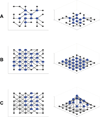Robustness and evolvability
- PMID: 20598394
- PMCID: PMC3198833
- DOI: 10.1016/j.tig.2010.06.002
Robustness and evolvability
Abstract
Why isn't random variation always deleterious? Are there factors that sometimes make adaptation easier? Biological systems are extraordinarily robust to perturbation by mutations, recombination and the environment. It has been proposed that this robustness might make them more evolvable. Robustness to mutation allows genetic variation to accumulate in a cryptic state. Switching mechanisms known as evolutionary capacitors mean that the amount of heritable phenotypic variation available can be correlated to the degree of stress and hence to the novelty of the environment and remaining potential for adaptation. There have been two somewhat separate literatures relating robustness to evolvability. One has focused on molecular phenotypes and new mutations, the other on morphology and cryptic genetic variation. Here, we review both literatures, and show that the true distinction is whether recombination rates are high or low. In both cases, the evidence supports the claim that robustness promotes evolvability.
Copyright 2010 Elsevier Ltd. All rights reserved.
Figures


References
-
- Dobzhansky T. Genetics and the Origin of Species. NY: Columbia University Press; 1937. p. 126.
-
- Wagner GP, Altenberg L. Perspective: Complex adaptations and the evolution of evolvability. Evolution. 1996;50:967–976. - PubMed
-
- Pigliucci M. Is evolvability evolvable? Nat. Rev. Genet. 2008;9:75–82. - PubMed
-
- Hansen TF, Houle D. Measuring and comparing evolvability and constraint in multivariate characters. J. Evol. Biol. 2008;21:1201–1219. - PubMed
Publication types
MeSH terms
Grants and funding
LinkOut - more resources
Full Text Sources

